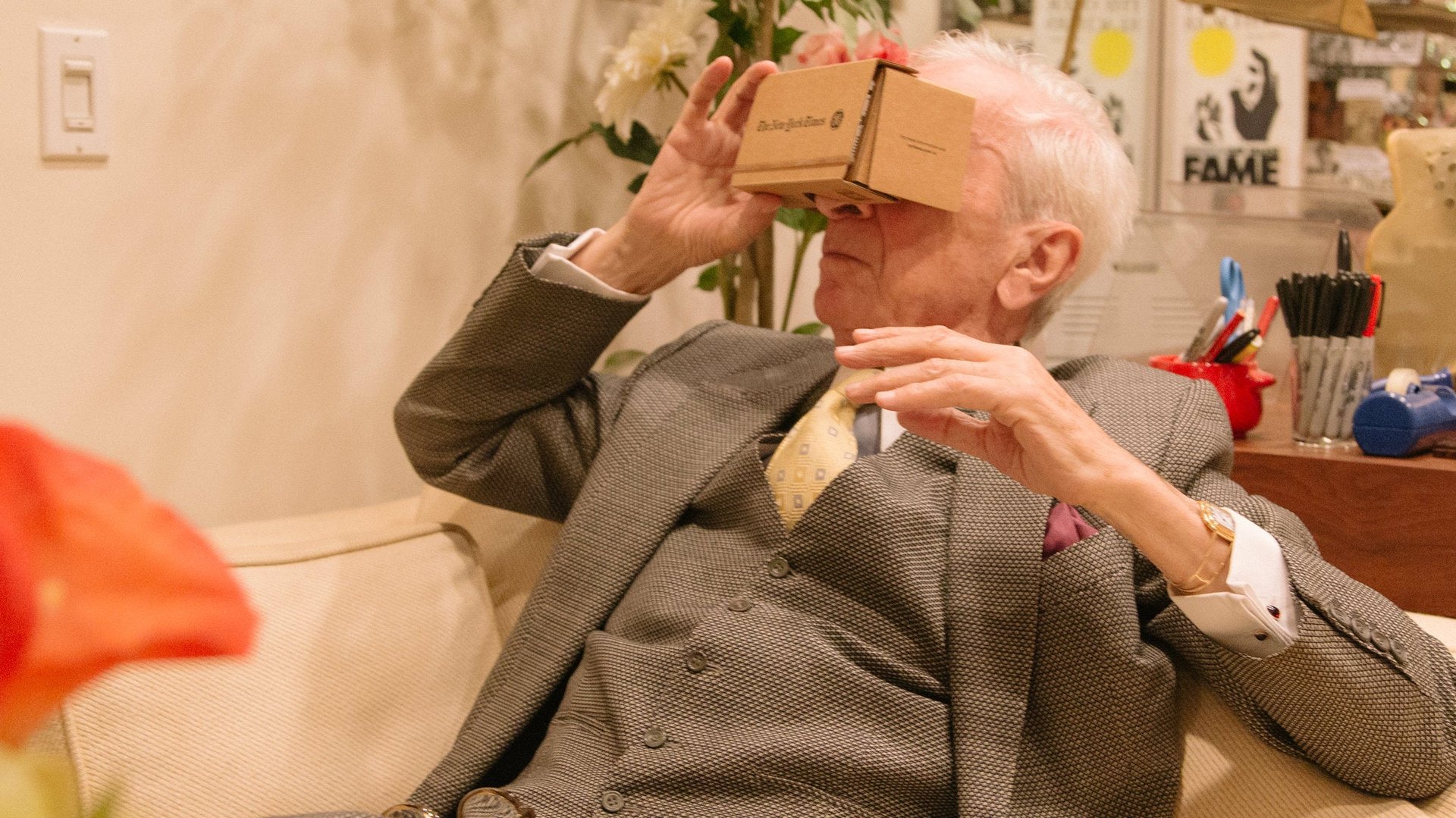Gay Talese has a cold reaction to the New York Times virtual reality app
There are few writers responsible for as much important work as Gay Talese. At 21, he was working at the New York Times. At 34, he wrote one of the defining pieces of the New Journalism movement, Frank Sinatra Has a Cold. Many many books later, at 83, he tried the New York Times Virtual Reality goggles when I showed up at his writing “bunker” this Monday, Nov. 9.


There are few writers responsible for as much important work as Gay Talese. At 21, he was working at the New York Times. At 34, he wrote one of the defining pieces of the New Journalism movement, Frank Sinatra Has a Cold. Many many books later, at 83, he tried the New York Times Virtual Reality goggles when I showed up at his writing “bunker” this Monday, Nov. 9.
I received the cardboard goggles with my subscription the day before, and I couldn’t resist offering them to Talese, with whom I already had an interview arranged with for this site (that is forthcoming).
Talese was surprisingly game and seemed somewhat excited even to try them, but it took just a few moments for him to render a rather decisive judgement. I put my iPhone into the cardboard goggles and handed them Talese.
“I don’t see it. Where is it?” he asked. The app wasn’t working properly.
He handed the device back to me.
“You’re right. It isn’t there,” I fumbled with the contraption and got it to play. I picked one of the shorter videos. “Ok, now you can see. This is an airdrop in Africa. You can turn your head and look around.”
He watched, gazing around the room with the cardboard goggles over his eyes as a virtual jet flew over head dropping aid packages, and then….
“But this doesn’t interest me in the least!” he said, removing them from his eyes. “You know why? You know why? It’s the sort of stuff you see in a documentary, but there’s no insight into the situation, into the characters…It’s just a bunch of scenes.”
“Sometimes, not sometimes, most of the time,” he said. “Television is driven by imagery… scenes. There will be a lead on a slow night, the networks will lead with a forest fire in Topanga, California—great visual scenes—or a bombing of Baghdad. Anything that shows you color, smoke, fire, bullets, dodging, gets on because it’s visual, but you don’t get anything.”
I pressed and asked if he thinks video can deliver that insight into characters.
He paused.
“No.” He said. “No, it can’t. There has to be face to face confrontation between the writer and the subject, and the writer has to be able to cultivate something from the subject to get something approximate to the truth of the subject.”
It’s perhaps not a surprising reaction from a man who has committed his life to telling stories with the written word. The technology changes, but thankfully, some things stay the same.